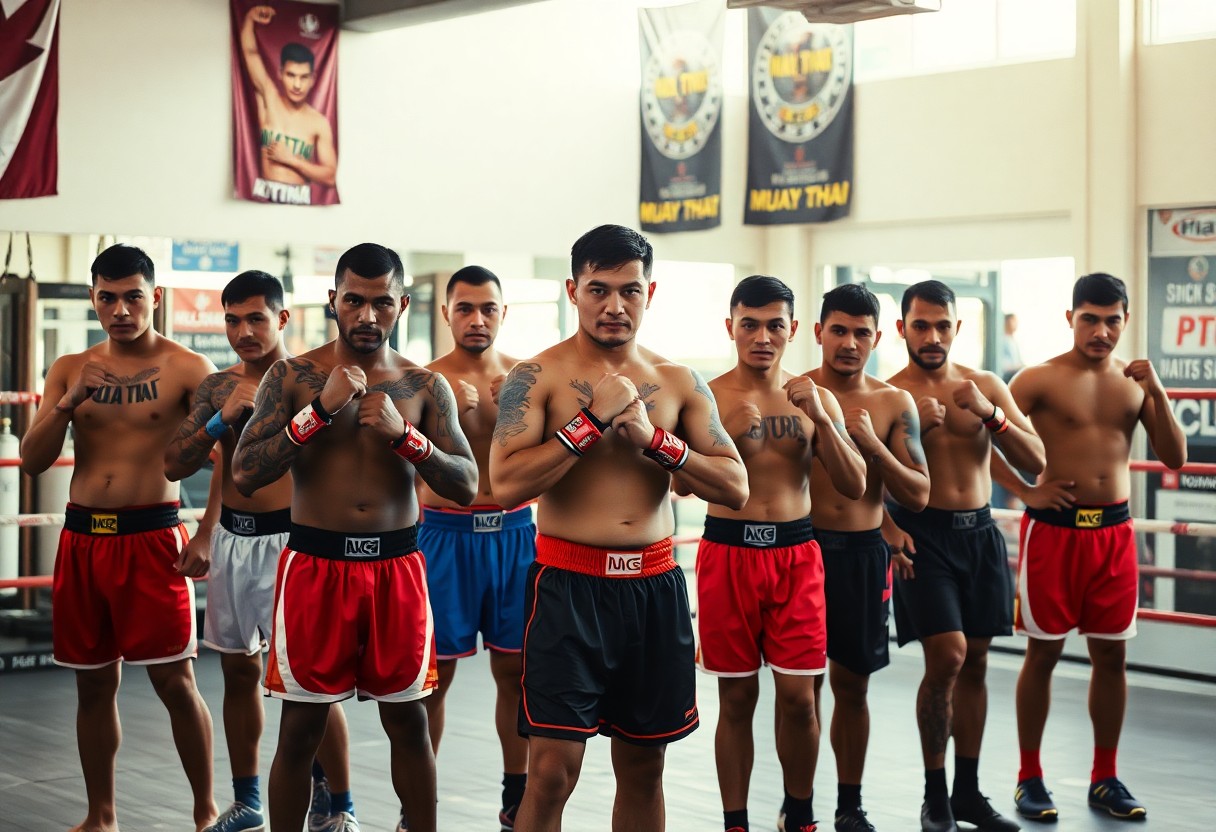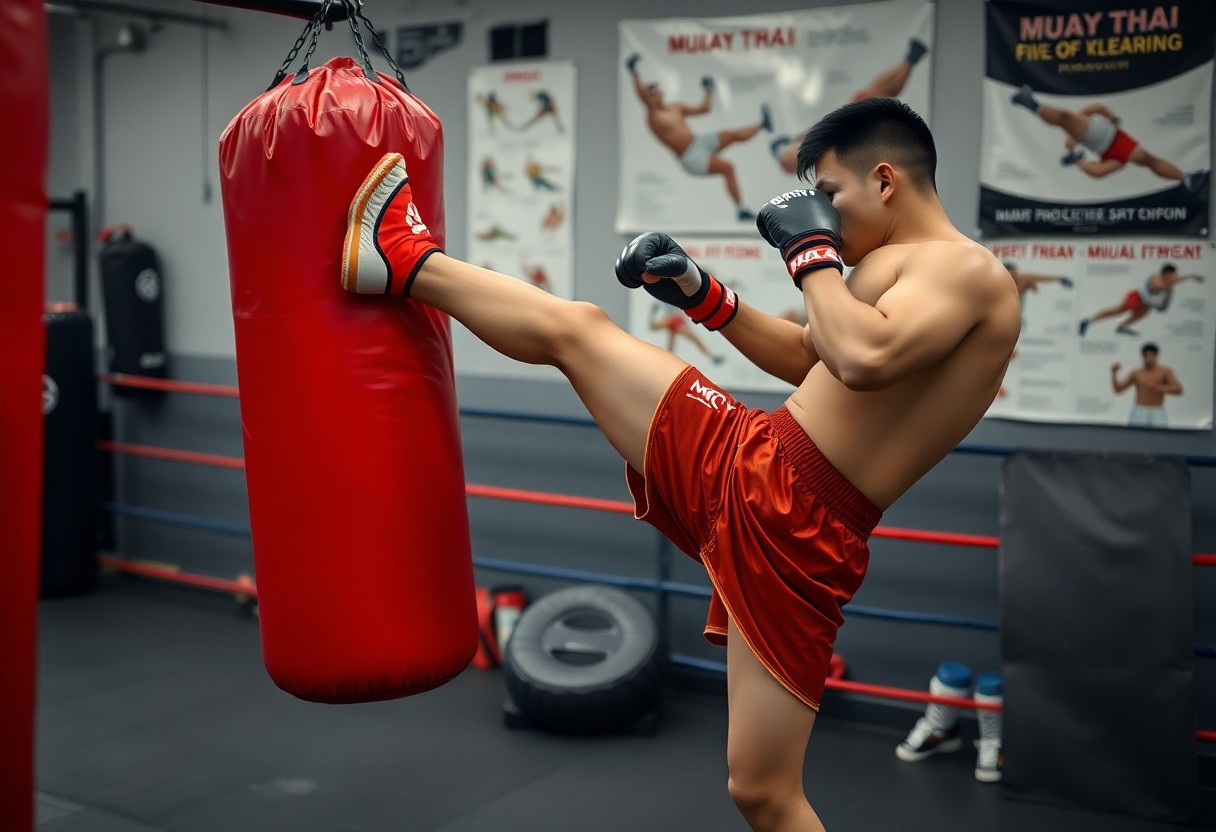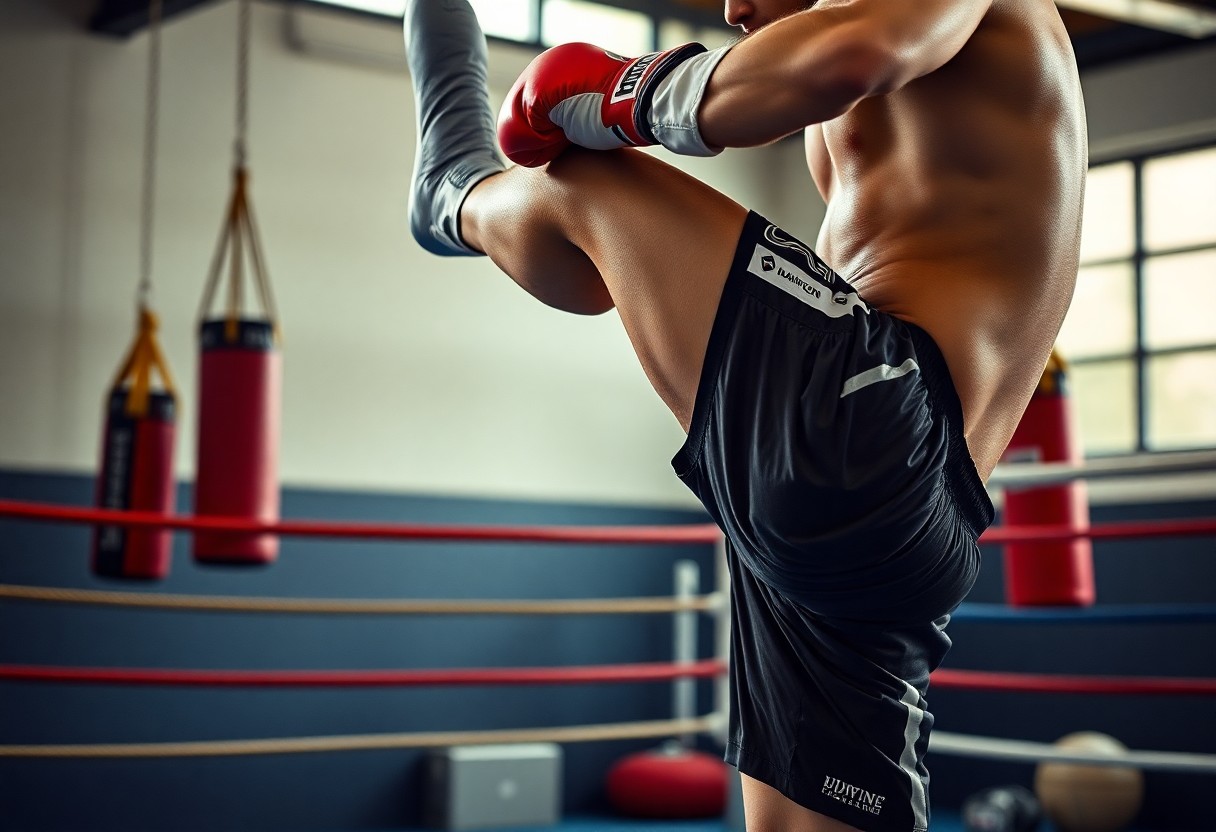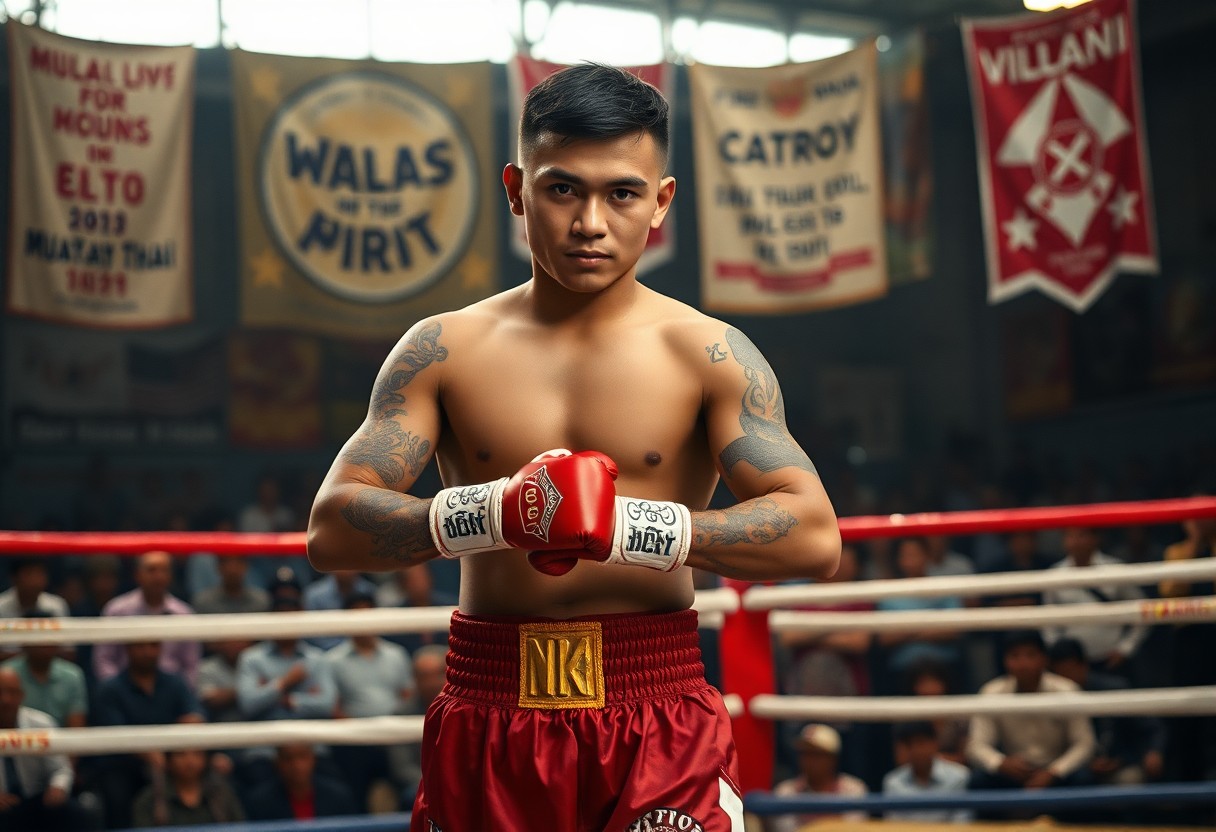
There’s a rich history in Muay Thai, marked by legendary fighters whose skills and dedication have shaped the sport. This guide explores the top 10 fighters who have made significant impacts, showcasing their unique techniques, remarkable achievements, and the legacies they have left behind. From championship titles to incredible knockout power, these athletes exemplify the art of eight limbs and inspire fans and fighters alike.
Understanding Muay Thai
Muay Thai, known as the “Art of Eight Limbs,” originated in Thailand and combines elements of striking using fists, elbows, knees, and shins. This martial art emphasizes both physical conditioning and mental resilience, making it a comprehensive combat sport. Practitioners train extensively in various techniques that enhance their striking efficiency and defensive skills. The rich history and traditional aspects of Muay Thai are deeply intertwined with Thai culture and rituals, solidifying its status as a revered combat sport worldwide.
Types of Fighters: Styles and Techniques
Fighters in Muay Thai adopt distinctive styles that reflect their physical attributes and personality. Understanding these fighter types can enhance viewing experiences. Common styles include:
- Boxers: Focus on hands and footwork.
- Counterstrikers: Capitalize on opponents’ mistakes.
- Combative Brawlers: Engage in aggressive exchanges.
- Elbow and Knee Specialists: Excel in clinch and damage.
- Distance Fighters: Maintain space using kicks.
| Fighter Type | Description |
|---|---|
| Boxers | Strong emphasis on hands and footwork. |
| Counterstrikers | Focus on defense and reactionary strikes. |
| Combative Brawlers | Engage in close-range exchanges. |
| Knee and Elbow Specialists | Utilize clinch techniques effectively. |
| Distance Fighters | Control fight pace and range with kicks. |
Perceiving the various styles enhances appreciation for each fighter’s strategy and adaptability in the ring.
Key Factors That Make a Fighter Legendary
The legacy of a fighter in Muay Thai comes from a combination of skill, perseverance, and charisma. These elements amplify their impact on the sport and audience. Factors include:
- Technical Skill: Mastery of techniques and adaptability.
- Fight IQ: Ability to strategize and counter.
- Physical Conditioning: Endurance and strength.
- Charisma: Connecting with fans and media.
- Championship Titles: Achieving significant victories.
Recognizing these attributes distinguishes legendary fighters and enhances understanding of Muay Thai rankings and histories.
Developing into a legendary fighter involves more than just physical prowess. It requires a combination of unyielding determination and mental fortitude. A fighter must consistently display high levels of technical skill and a superior fight IQ to navigate diverse opponents effectively. Maintaining optimal physical conditioning ensures they endure the rigors of competition while a fighter’s charisma can elevate personal engagement with fans, often leading to greater opportunities. Additionally, securing championship titles cements their status in the sport’s history. Recognizing these qualities is necessary for understanding the journey to greatness in Muay Thai.
Profiles of Top Legendary Fighters
Fighter #1: Background and Achievements
Nong-O Gaiyanghadao is a prominent figure in the world of Muay Thai, known for his exceptional skill set and impressive accomplishments. Born in 1986, he began training at a young age and quickly made a name for himself by winning numerous championships. Throughout his career, Nong-O has secured the prestigious ONE Championship Muay Thai World Title and has a record of over 260 fights, with an astonishing win rate. His dedication and performances have solidified his status as a modern legend in the sport.
Fighter #2: Signature Moves and Impact
Saenchai is celebrated for his dazzling and unpredictable fighting style, which combines traditional techniques with innovative maneuvers. His signature moves include the famous cartwheel kick and powerful knee strikes, which have bewildered opponents worldwide. This creativity not only showcases his exceptional athleticism but also his ability to adapt and outsmart rivals in the ring. Saenchai’s influence extends beyond his personal achievements, inspiring a new generation of Muay Thai fighters to incorporate flair into their fighting styles.
In particular, Saenchai’s cartwheel kick has become a defining element of his legacy, highlighting his agility and technical prowess. This maneuver has been instrumental in many of his victories, allowing him to catch even the most experienced fighters off guard. Aside from his fighting tactics, Saenchai’s emphasis on sportsmanship and respect for opponents has significantly impacted the culture of Muay Thai, promoting a sense of camaraderie among fighters and fans alike. His ability to blend exceptional skill with showmanship makes him not only a formidable opponent but also an ambassador for the sport.
Fighting Styles in Muay Thai
Fighting styles in Muay Thai vary greatly among practitioners, reflecting unique backgrounds and techniques. Traditional fighters often adhere to classic methods, emphasizing powerful strikes and defensive maneuvers. In contrast, modern adaptations incorporate elements of mixed martial arts, prioritizing speed and agility. The versatility in styles allows fighters to not only adapt to their opponents but also to develop an individual identity within the ring.
Traditional Techniques vs. Modern Adaptations
Traditional techniques in Muay Thai stem from centuries-old practices, focusing on precise elbow strikes and knee attacks. On the other hand, modern adaptations have integrated strategies from other combat sports, emphasizing footwork and head movement inspired by boxing and MMA. This evolution enhances the dynamic nature of the sport, making it more engaging for contemporary audiences and fighters alike.
Analyzing Training Methods and Preparation
Training methods in Muay Thai reflect the evolution of fighting styles. Traditional training often includes long hours of shadow boxing, pad work, and sparing sessions, focusing on technique and conditioning. Modern adaptations, however, utilize sophisticated technology and structured programs, incorporating strength and conditioning routines, nutritional guidance, and psychological preparation, resulting in fighters who are not just skilled but also athletically superior and ready for the demands of competition.
A deep investigate training methods reveals the varied approaches fighters take to prepare for bouts. Successful fighters often combine traditional practices like heavy bag work and technical drills with modern fitness regimens that include HIIT (High-Intensity Interval Training) and cardiovascular workouts. This multifaceted preparation enhances both their skill set and physical fitness, allowing for optimal performance in the ring. By emphasizing the importance of recovery, mental toughness, and strategic fight planning, contemporary training ensures fighters are well-rounded and adaptable to any challenge.
Essential Tips for Aspiring Fighters
Success in Muay Thai requires dedication and strategy. Follow these necessary practices to elevate your training:
- Stay disciplined with your training schedule.
- Focus on technique over brute strength.
- Prioritize fitness and conditioning workouts.
- Study your opponents for tactical advantages.
- Seek continuous feedback from trainers and peers.
After integrating these tips into your regimen, you’ll develop a well-rounded approach to fighting that enhances both skill and performance.
Training Regimens and Focus Areas
Effective training regimens combine technical drills, sparring sessions, and fitness training. Fighters should concentrate on developing core strength, agility, and striking techniques. Incorporating shadow boxing, heavy bag workouts, and pad work enables fighters to refine their skills while conditioning their bodies. A balanced regimen not only builds technique but also enhances stamina and durability in the ring.
Mental Preparedness and Strategy
Mental preparedness sets champions apart from competitors. Aspiring fighters need to cultivate a strong mindset through visualization techniques, stress management, and strategic planning. Reviewing past fights and understanding different fighting styles can offer insights that enhance decision-making during bouts. Combined with practical experience, a well-developed mental approach equips fighters to handle high-pressure situations effectively.
Incorporating mental strategies involves more than just thinking positively; it’s about developing a game plan and practicing it under various conditions. Fighters should also engage in exercises that simulate fight scenarios to build confidence and adaptability. Techniques like meditation and breathing exercises can center the mind, helping athletes maintain focus and clarity even when faced with unexpected challenges in the ring. This dual approach of mental and physical readiness ensures a comprehensive preparation for fighters aiming for success in Muay Thai.
Pros and Cons of Following Legendary Fighters
| Pros | Cons |
|---|---|
| Inspiration to train harder | Unrealistic expectations of success |
| Access to high-level techniques | Potential to mimic bad habits |
| Motivation during tough training days | Overemphasis on specific styles |
| Understanding fundamentals through their strategies | Decreased focus on personal development |
| Sense of community among fans | Risk of burnout from pressure to emulate |
Learning from Their Skills and Tactics
Studying legendary fighters offers invaluable insights into effective techniques and strategies. Their unique styles, whether it’s a focus on powerful leg kicks or exceptional clinch work, provide a blueprint for aspiring fighters. Analyzing their fights can reveal successful patterns and adaptations to opponents, enabling learners to refine their own approach. Moreover, understanding the mental fortitude of these athletes can enhance psychological resilience in one’s own practice.
Potential Pitfalls for Aspiring Fighters
Aspiring fighters may encounter challenges when idolizing legendary figures, as it can sometimes lead to unrealistic comparisons and expectations. While inspiration is important, it’s vital to recognize the individuality in each fighter’s journey, including the hard work and circumstances that shaped their careers.
These potential pitfalls can stifle personal growth and create disillusionment. Aspiring fighters might feel inadequate if they fail to achieve similar heights, forgetting the years of dedication and unique paths that champions undertook. This fixation can also cause learners to copy techniques without adapting them to their own style and physicality, risking injuries or ineffective practices. Balancing admiration with a personalized approach is key to fostering both skill development and mental well-being.
Step-by-Step Guide to Becoming a Legendary Fighter
Building Fundamentals in Muay ThaiEstablishing a solid foundation is imperative for aspiring fighters. Focus on mastering basic techniques such as the stance, footwork, and striking fundamentals. Regularly practice shadowboxing and drills to internalize these skills. Attend classes and seek guidance from experienced coaches. Consistency in training and an understanding of the rules and traditions of Muay Thai will bolster your journey. |
Progressing to Advanced Techniques and SparringOnce the fundamentals are solidified, advancing to complex techniques is vital. Introduce elbow and knee strikes, and begin incorporating combinations into your training. Engagement in controlled sparring sessions enables you to apply learned skills against resisting opponents, enhancing timing and adaptability. Regular feedback from trainers and partners is key to refining technique during this stage. |
- Engage in partner drills to practice techniques.
- Participate in sparring to test your skills under pressure.
- Record and analyze your sparring sessions for improvement.
- Join competitions to gain experience and gauge your progress.
|
Incorporating sparring into your routine is critical for developing practical skill application. Focus on maintaining composure under pressure, utilizing learned techniques in realistic scenarios. Start with light sparring to build confidence, gradually increasing intensity as your skills improve. Use a systematic approach by analyzing each session’s performance, identifying weaknesses, and addressing them in future training. This cycle of practice, feedback, and implementation fosters a deep understanding of advanced techniques and helps shape a complete fighter. |
Conclusion
With these considerations, the top 10 legendary Muay Thai fighters exemplify the rich history and cultural significance of this martial art. Their remarkable techniques, dedication, and contributions to the sport have not only inspired countless practitioners but also elevated the profile of Muay Thai globally. Understanding their legacies provides fans with a deeper appreciation for the discipline and an acknowledgment of the athletes who shaped its evolution. These fighters are not merely names; they are icons whose stories embody the spirit of Muay Thai.
FAQ
Q: Who are the top 10 legendary Muay Thai fighters every fan should know?
Q: What makes Saenchai one of the greatest Muay Thai fighters?
A: Saenchai is known for his exceptional agility, creative techniques, and ability to evade opponents. His impressive achievements include multiple Lumpinee Stadium titles and a reputation for dominating at various weight classes while entertaining fans with his charismatic fighting style.
Q: How did Buakaw Banchamek impact the global popularity of Muay Thai?
A: Buakaw is credited with bringing international attention to Muay Thai through his participation in K-1 events and prominent fight promotions. His striking skills, combined with his success in the ring, have inspired many aspiring fighters worldwide, making him a key figure in popularizing the sport outside of Thailand.




